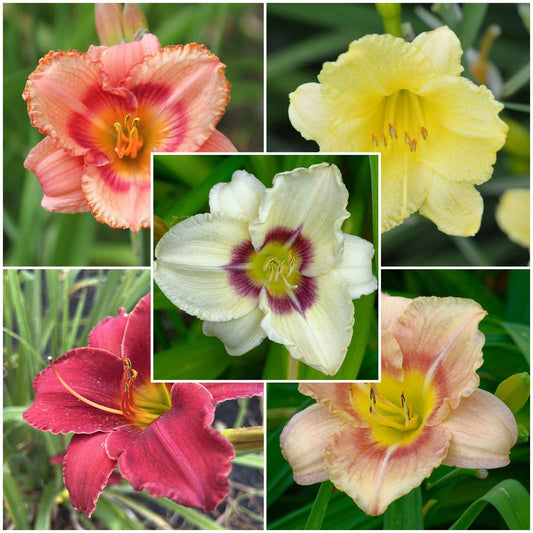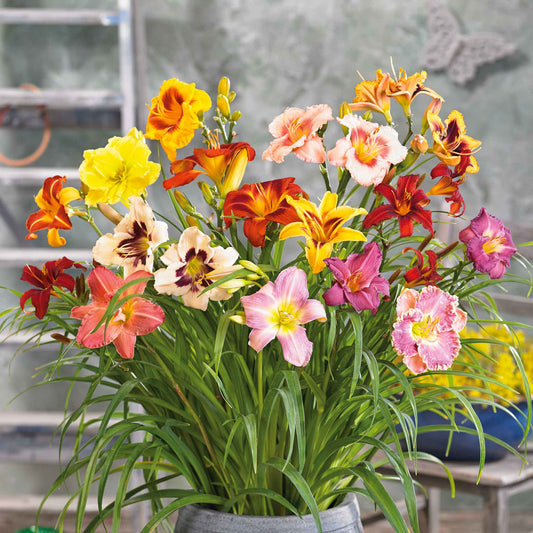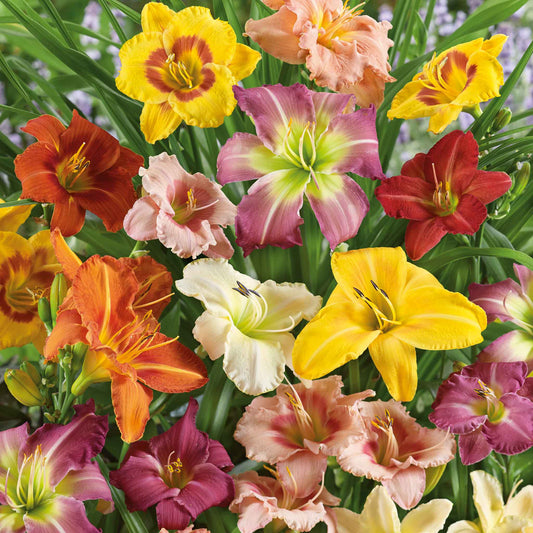-
main-collection-product-grid

Daylily Roots - Fragrant Rebloomer Mix
These colorful blooms are a joy for all the sensesDaylily Roots - Fragrant Rebloomer Mix
These colorful blooms are a joy for all the sensesRegular price As Low As $35.99Regular priceUnit price per -
main-collection-product-grid

Daylily Roots - Happy Mix
Cheery midsummer blooms to brighten any shady corner of the gardenDaylily Roots - Happy Mix
Cheery midsummer blooms to brighten any shady corner of the gardenRegular price As Low As $35.99Regular priceUnit price per -
main-collection-product-grid

Daylily Roots - Mixed
Your favorite shade-tolerant lilies in every imaginable colorDaylily Roots - Mixed
Your favorite shade-tolerant lilies in every imaginable colorRegular price As Low As $26.99Regular priceUnit price per
Growing dayliies in your garden
- 3 daylily bulb varieties
- Perennial that is cold tolerant
- Almost effortless to grow
- Dazzling assortment of colors to choose from
Daylilies are the best low-maintenance perennial
Daylilies are fragrant perennials, that despite the common name, are not actually lilies! Daylilies are in the genus Hemerocallis, the name of which comes from the Greek words for "day" and "beautiful". The genus is native to Asia, yet is popular all over the world due to its hardiness and beauty. There are Chinese paintings that are 1,000 years old showing orange daylilies. They were first brought to North America by early European immigrants. By the early 1800's, the plant was naturalized and in the gardens of many homesteaders.
Believe it or not, there are over 35,000 daylily cultivars! The majority of these has been developed within the last 100 years by hybridizers. Some of these cultivars have sold for thousands of dollars. However, many exceptional, beautiful cultivars are available for much more reasonable prices. In the United States, daylily breeding has become a specialty. This is in part due to their heat and drought resistance.
The best time to plant daylilies
Spring planting is advised. Look for an area that receives full sun, although some light shade will be tolerated in warmer southern zones. Six hours of full sunlight a day is necessary either way. Prior to planting, loosen the soil to allow oxygen in. Daylilies should be planted in holes that are wide and deep enough to place the bulb inside without bending the roots. Plant the bulb with the eyes pointed towards the surface. The top of the bulb should be close to one inch above the surface of the soil. Immediately upon planting, water the daylilies.
Proper daylily care
Unless you are in an extremely dry climate, regular watering after planting will be be unnecessary. A heavy watering once a week is preferable to daily light waterings. To maintain the area, regularly weed around daylilies to avoid root confusion when you need to transplant or seperate bulbs in the future. If you prefer a manicured appearance, remove dead blooms and leaves. In the late fall, trim off the remaining dead leaves down to ground level. Place some mulch on top of the root system to protect from freezing winter month temperatures.
For more information about planting, growing, and caring for daylilies, see the Daylily Bulbs Planting Guide.


